A day trip to Capri
Two days into our vacation in Naples, on a relatively sunny November day, we took a day trip to Capri. It was a 40 minute walk from our hotel to the port from where hydrofoils depart for Capri several times each day. This being off season, only a few ticket windows were open and it took us some time to locate the right one. Multiple companies operate on this route and your ticket is not transferable across vessels operated by different companies. It was about an hour to our departure. We stood at the harbour and gawked at the cruise ships and the blue water. The wind was nippy, and soon the smell of burnt diesel from the boats and hydrofoils began to irritate my lungs. There were a couple of cafes near by that served sfogliatella1 and fresh coffee. We picked one with a covered outdoor terrace and enjoyed the wares:
 Espresso, sfogliatella and lightly sparkling water
Espresso, sfogliatella and lightly sparkling water
Our hydrofoil arrived and nimbly executed a 180º turn to let us board.
 Our hydrofoil executes a 180º turn
Our hydrofoil executes a 180º turn
These hydrofoils look very futuristic but make for a very choppy ride. I felt undulation of each wave the hydrofoil negotiated. Sometimes you are jolted awake by the sensation of falling inside a dream - the entire 40-minute ride felt like one such dream. I thought I was going to be sick - it must be a common occurence on this route since a member of the crew stood ready in the aisle with a stash of polythene bags. On a row of seats next to ours, someone in a black hoodie lay slumped in a foetal position clutching tightly to their bag. I lay back, put on my headphones and closed my eyes. The song that came on (Émigré by Alela Diane) was situationally relevant but wasn’t very reassuring:
I can feel the fear hang heavy on the water
Glinting sharply with the pale moonlight
Mothers hold on tightly to your children
The waves are breaking violently tonight
I was relieved when we finally docked at Capri’s small harbour. Given my recent obsession with the tiling patterns of bricks in Amsterdam, one of the first things I noticed upon setting foot on the land was the Voronoi tessellation engraved on the floor tiles at the harbour:
 The view from the Capri harbour
The view from the Capri harbour
 Voronoi tessellation engraved on concrete tiles
Voronoi tessellation engraved on concrete tiles
Across the road from the harbour was Capri’s funicular station. The sun was to set well before 5 PM and it was already well past noon. Wanting to maximise sightseeing in the daylight, we decided to take the funicular instead of walking uphill. The ride was short and the station on the hill had a terrace that offered a beautiful view.
 The view from the funicular station
The view from the funicular station
This being off season, most restaurants were closed. The ones open offered beautiful views (if you could land a seat by the window) but charged a premium. We weren’t particularly hungry so we decided to walk to Anacapri - a small commune2 to the west of Capri. We came across parking lots that surely must be some of the most picturesque parking lots in the world:
 A picturesque parking lot
A picturesque parking lot
We must’ve walked for about 10 minutes along the highway and couldn’t shake off the feeling that we were doing something wrong. Soon we spotted a set of rocky stairs (Scala Fenicia) cut into the hills to our left. We gladly took them to get off the highway. Despite the long and moderately exhausting climb the view of the azure sea, the clear skies and the slight nip in the air kept us feeling light and happy.
 Walking along the highway
Walking along the highway
 The view from the stairs
The view from the stairs
Most shops in Anacapri were closed too. Some restaurants had even put up notices telling visitors that won’t be open before the start the of the season in April next year. Others deployed complicated looking signs to educate patrons about their opening times:

For some reasons a few shops selling clothes were open - most of their merchandise in shades of blue that mimicked the colour of the sky and sea here. Either they still had local customers coming in or since they weren’t dealing in perishable raw materials, they could stay open despite low off season sales.
 One of the shops selling clothes that was open
One of the shops selling clothes that was open
We finally found a restaurant that’d feed us some sandwiches, pizza and sparkling wine. The pizza, unlike what was shown on the menu, turned out to be a large bruschetta with some cheese and tomato on it, but we were far too hungry by now to complain (and to be fair, they gave us a 2€ discount over the list price).
We wandered aimlessly through the warren of small streets soaking in the quiet and the occasional view of the distant sea.
 A street in Anacapri
A street in Anacapri
 A view of the distant sea
A view of the distant sea
 A street in Anacapri
A street in Anacapri
The views on the way down were stunning. The skies had turned dramatic. We could see rain falling in the distance and feel it drifting towards us with the wind.
 Rain drifting towards us
Rain drifting towards us
 Dramatic skies
Dramatic skies
The wife kept a count of stairs on the way down (1000+). Once back in Capri, we spent some time walking around the beach and the harbour at Capri…
 Stone steps
Stone steps
 A beach near the Capri harbour
A beach near the Capri harbour
 Boats at Capri harbour
Boats at Capri harbour
…and eventually settled down at a cafe next to the harbour to wait for our hydrofoil back. It docked some 30 minutes before its scheduled departure and since it was getting a bit chilly, were only too happy to go settle inside sooner. The evening sea was a lot calmer and quite possibly our choice of seats in the middle of the boat a tad wiser - the ride back wasn’t has choppy in the morning. Still, the ride left our stomachs riled enough that we didn’t mind waiting for over 30 minutes for our turn at the famous and perenially crowded L’Antica Pizzeria de Michele in Napoli!
A gable stone for a time traveller from the past
The municipality of Amsterdam recently posted a short article about the life and works of George Hendrik Breitner. The post included a picture of Oude Looiersstraat taken around 1896.
 Oude Looiersstraat circa 1896
Oude Looiersstraat circa 1896
I recently happened to be in the general neighbourhood of this picture and decided to check if the houses were still around. The houses in the picture had been torn down. A sturdy, relatively modern apartment complex stood there in their stead. And while the original numbering scheme had been re-jigged; possibly to account for the increased number of dwellings, odd-numbered houses still occupied the same side of the street1.
 Oude Looiersstraat circa 2019
Oude Looiersstraat circa 2019
But one thing from the original structure was still intact - the gable stone!
 Gable Stone: 1786 - De Hoek Steen
Gable Stone: 1786 - De Hoek Steen
Unlike in the original 1896 photo, its top half was no longer occluded by a pipe, and a coat of fresh paint had clearly been applied to it. I found this practice of leaving the original gable stone in the new building oddly touching. As if left there to help a time traveller from 1890s find their way around…
p.s. The inscription on the gable stone translates to The Cornerstone.
I wrote about the odd-even house numbering in Amsterdam a few years ago.↩︎
Patterns of bricks on sidewalks of Amsterdam
Over the past few days, I’ve become quite interested in patterns of bricklaying on the sidewalks and streets of Amsterdam. There seem to be 4 major ways in which the bricks are laid out:
 The four major brick patterns
The four major brick patterns
Patterns numbered 1 to 3 are the staple of all streets and sidewalks. It might not be red bricks everywhere, but they inevitably conform to one of these arrangements.
Pattern 4 only seems to be used for temporary repairs around construction sites. On a recent trip to Enschede1, I came across a 3-brick variant of the same pattern:
 Crosshatch?
Crosshatch?
Again, only around a large construction site.
Recently, while looking at the pattern around a bend2, I realised that pattern 2 is simply pattern 1 rotated ±45º.

Another fascinating aspect is the way in which two or more patterns come together on the same street. In the old city center around the canals, it’s usually to demarcate the road from the sidewalk and parking.
 Patterns combine
Patterns combine
Finally, sometimes different coloured bricks are used (or painted) to mark crossings and intersections.
 Traffic markings
Traffic markings
It’s been an enjoyable exercise to recreate them programmatically3:

I’ve used a random shade of grey for each brick, but by varying the colour a bit more predictably (say based on a mathematical function like sine or cosine), some interesting local patterns emerge within the rectangular whole.

The possibilities for generative art seem endless, especially if I were to throw in more colours and animation into the mix.
The things you pick on when you are paying attention. I now also have a lot of questions.
- Are there proper nouns to describe these patterns?
Update 19 Oct: Yes - since bricklyaing is as old as civilisation itself, words exist to describe these patterns: 1: 45º Herringbone 2: 90º Herringbone 3: Running Bond 4: Double Basketweave
- Is there a reason that they occur with the relative frequencies that they do? For example, are there underlying economic or temporal considerations that affect the choice of patterns for a given street?
- Are some patterns faster to lay than others?
- Do some patterns consume fewer bricks than others?
- Is the choice of a pattern merely driven by aesthetic considerations such as maintaining homogenity with what was originally used in a street (which might’ve been an arbitrary decision back then)?
- Do bricklaying machines allow you to pick one? Do they have a default that ends up becoming the dominant pattern in use?
- Why is the same pattern sometimes created with bricks of different height:width ratio (1:2 vs 1:3, to say nothing of their depth)?
I wish there were an atlas of sidewalk brick patterns for Amsterdam. Perhaps, in a not so distant future, high resolution statellite imagery coupled with computer vision would allow us to create one automatically.
A sleepy town in eastern Netherlands some two hours train ride from Amsterdam.↩︎
Much to the annoyance of the wife. One moment I am walking alongside her, the next I am glued to the sidewalk staring down hard, smiling to myself.↩︎
I used Processing.py and will update this footnote once I publish the code.↩︎
Listening to the soundtrack of Tezaab after 25+ years
I grew up in Delhi at a time where there were only two TV channels. They would broadcast government sanctioned programing for limited hours in the evening. There were segments that dispensed advice on agriculture, some news, a little light music and drama serials. That made movies really special.
Marketing movies must’ve been difficult back then. You had two main marketing channels - radio and newspapers. That said, our attention was not as scarce as it is today. If you could somehow reach us, your message stood a higher chance of sticking. Also, if you had the budget, you could repeat your message ad-nauseum on the radio - as evidenced by tens of ad jingles from my childhood that I can still recall.
I don’t remember seeing movie adverts on TV back then. We did have a program that broadcast songs from movies (Chitrahaar). I guess that’s probably one of the reasons songs have been such an integral part of Bollywood movies - they was also a marketing vehicle. They’d even place small promotional clips about an upcoming movie at the end of each side of audio cassettes.
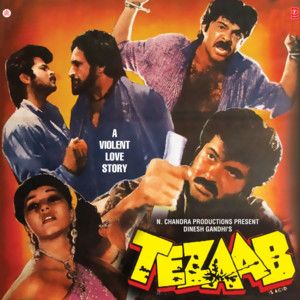
When Tezaab came in 1988, A. R. Rahman was still 4 years away. The acoustic landscape in North India was dominated by lilting voices backed by expansive orchestral theme pieces, dholaks, acoustic guitar and bits of synthesizers, composed mostly by musicians that only seemed to be able to work in pairs (Laxmikant-Pyarelaal, Kalyanji-Aaanandji, Nadeem-Shravan, Jatin-Lalit).
The music of Tezaab must’ve become a hit before the movie did.
Music was not something my family actively engaged with - it was merely the background soundtrack to which we’d get ready for school or partake of oranges on the house’s rooftop on lazy Sunday winter afternoons. That changed when my aunt gifted me my first walkman. Listening to music for the first time in stereo over headphones remains one the biggest transformative experiences of my life. When played on the walkman, the dusty audio cassette library of my parents metamorphosed into something entirely new altogether. I must’ve picked up the cassette of Tezaab then, quite possibly a few years after its release.
While I found the main track (Ek Do Teen Chaar)1 of Tezaab too loud, a couple of tracks from the movie (Jeena Nahi, So Gaya) must’ve made an impression. I was (and to some extent am) bit of a musical snob. To think that I found something worthwhile in a mainstream Bollywood soundtrack composed by Laximant-Pyarelaal must have been an unpalatable thought for me to hold in my mind back then - let alone admit it loudly to someone. Anyway, the tracks stayed lodged in some obscure corner of my mind but I hadn’t heard the music of Tezaab for what, 25 years at least?
I play with Garageband from time to time. It’s my acoustic equivalent of adult mandala colouring books. After not having touched it for five years or so, I started it again on my phone - probably egged on by the tutorial about making music that Ableton recently released on their website. While I was arranging the loops into something resembling a musical piece, Jeena Nahi, suddenly came back to me very clearly deconstructed into its constituent tracks - just like a fully formed Garageband project.
Especially the synth intro of the song:
and the first interlude:
When you pay close attention you also notice how many motifs are repeated and would make for perfect loops. Here are three examples from the first three or so minutes of the close to eight minute long song.
Trying to make music on Garageband has given me a new-found appreciation for all the hard work that went into recording and putting a song together in that era of analog tapes.2
p.s. The first couplet of Jeena Nahin is:
Keh do ki tum ho meri varna
jina nahin mujhe hai marna
which roughly translates to:
say that you are mine
or else I want to die
The wife wanted to look up the lyrics online and one of the first results she came acorss was an obituary of someone called Mary Verna.
p.p.s. The song that follows Jeena Nahin is Tumko Hum Dilbar Kyon Maane - musically and lyrically entirely forgettable - one those cassette fillers that was probably written, composed and recorded in a day. The realisation that there were people mentioned in that song that seemed mythical growing up but were now all dead (Phoolan Devi, Sri Devi, Dara Singh) made me a little sad. A friend shared this nuggent on Facebook:
Trivia: the song “Tumko Hum Dilbar Kyon Maane” was remarkable in that it was added after the movie was released in theatres. They actually put up a second round of posters proclaiming “New Song!”.
p.p.p.s. A word about the movie itself: the byline on the poster reads: “A violent love story” - which basically means GrindHouse cinema with catchy Bollywood songs thrown in. So given the theme of the movie the parents wouldn’t have been too keen for me and my sister to watch it. Forbidden fruit is tastier, but this is the 80s so no computers, video CDs or DVDs, no internet and thus no bit-torrenting either - in short, no other means for a timid, school-going teenager to procure the said forbidden fruit. I don’t recall watching Tezaab, but if we did it would’ve been under parental supervision with my mother on the ready to fast-forward scenes that might’ve been deemed too racy or violent for us.
I call it “main” because it was the first song in the movie and the first song on side A of the audio cassette. I remember it being ridiculed for its lyrics - the bulk of which is counting from 1 to 13 in Hindi. Apparently these were dummy lyrics that the composer was humming but the lyricist took a liking to it and used it as the foundation for the rest of the song.↩︎
Meanwhile, kids these days are growing up with tools on their phones many times powerful than entire recording studios. Imagine what someone’s recollection of making and listening to music will be 25 years from now…↩︎
Heatwaves
The heatwave in July this year led to record temperatures across the Netherlands. Eight weather stations logged maximum temperatures higher than 40ºC. The record in De Bilt* came at 37.5ºC. While around a couple of degrees warmer than last year, the heatwave didn’t last as long and we got a bit of cool weather and some rain early in August. However, towards the end of August, we got another mini-heatwave - making this the first ever officially recorded instance of two heatwaves in two consecutive years.
More often than not, we get really clear skies in Amsterdam during the heatwaves. I walked around and tried to make something of them:
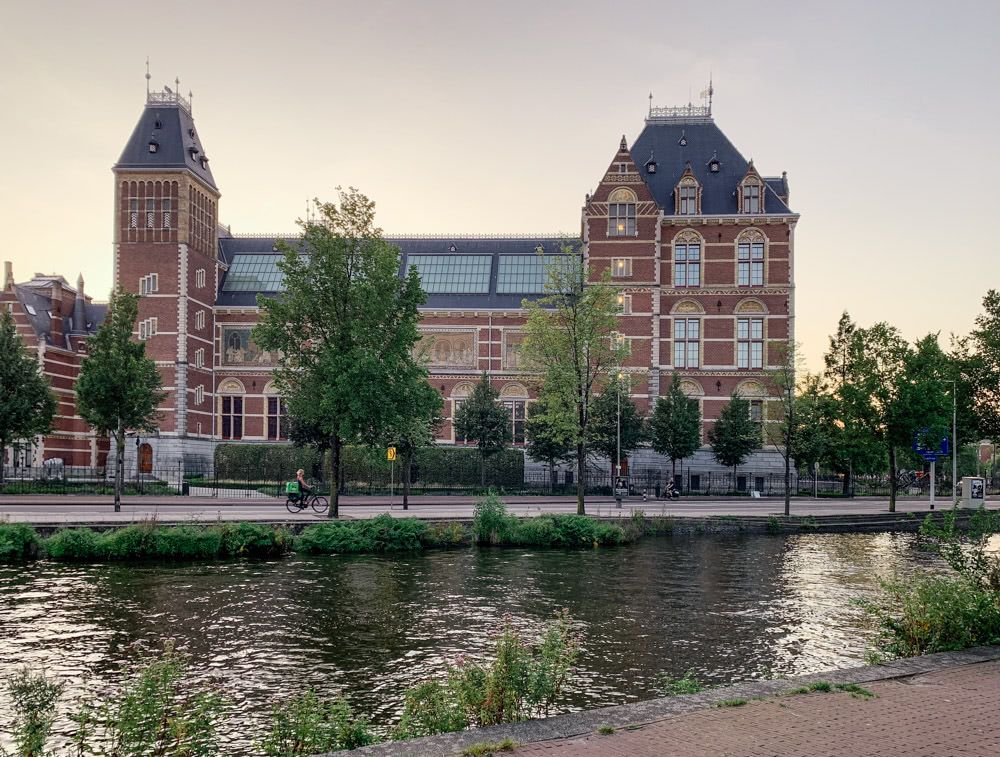 Rijksmuseum
Rijksmuseum
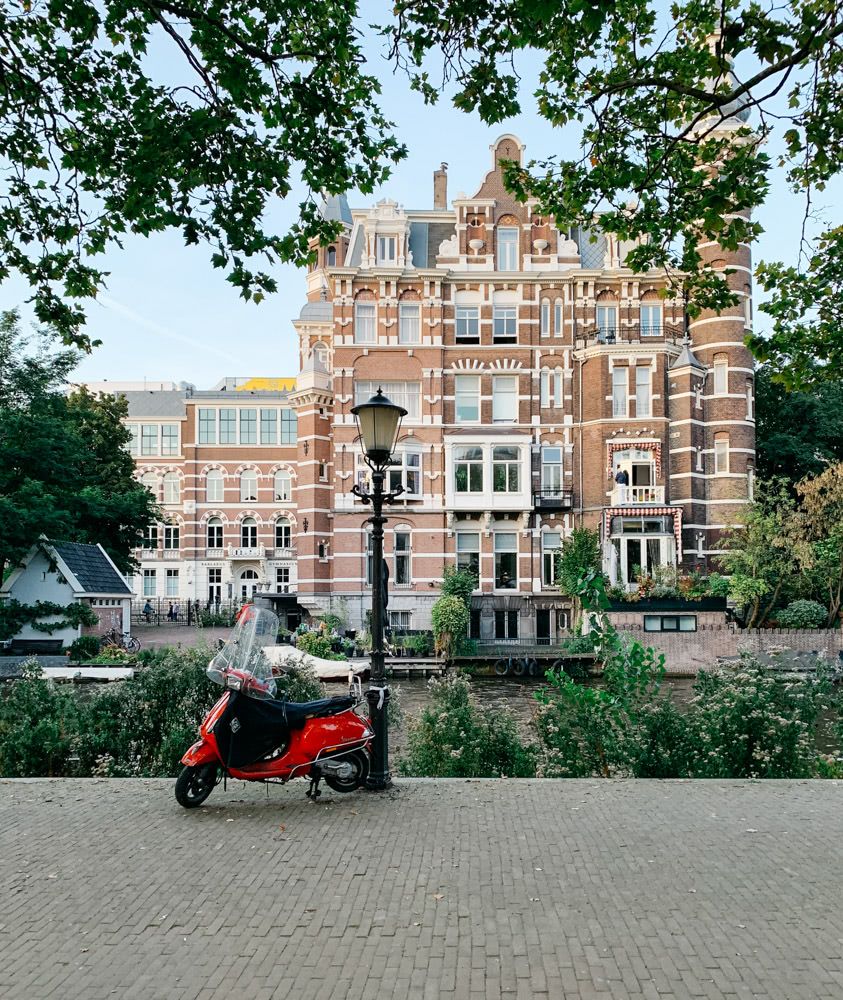 Stadhouderskade
Stadhouderskade
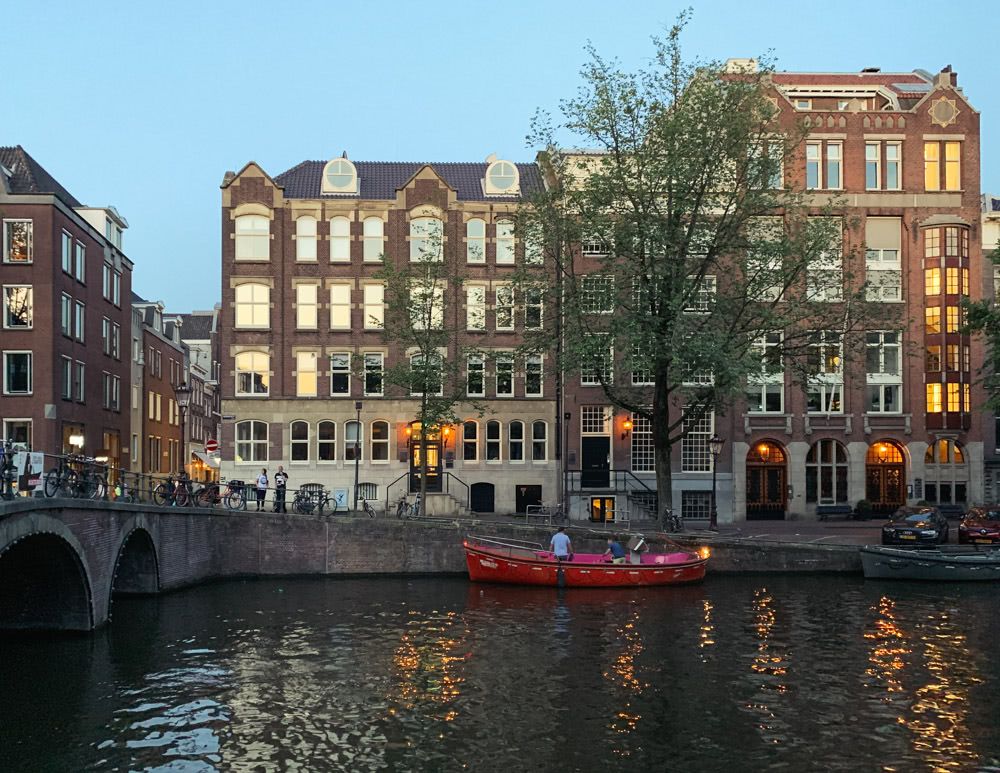 Keizersgracht/Berenstraat
Keizersgracht/Berenstraat
* For the purpose of official national temperature records in the Netherlands, the readings from the weather station at De Bilt are used. This is:
for historical reasons - as this was the first proper Royal Netherlands Metrological Institute (KNMI) weather station in the Netherlands (going all the way back to 1897)
also because it is centrally located and so relatively free from the influence of the sea in the north and the landmass in the south. This makes it a good representative of the national “average” weather.
NOS (kind of our BBC) has a good explainer video on YouTube. It’s in Dutch but you could use auto-translated closed captioning feature of YouTube to make some sense of it.
Impressionism in Canada
A work meeting in Munich a couple of weeks ago got canceled at the last minute. That left me with a free day to look around. A quick internet search of things to do in Munich turned up an exhibition of works by late 19th/early 20th century Canadian impressionists at Munich’s Kunst Halle. Canada is the last place you associate with Impressionism. I was intrigued.
While many Canadian painters finished their education in ateliers of Paris, they eventually returned and applied the techniques of Impressionism to subjects and landscapes of their own country. I was interested in seeing how the ochre palette of sunny, southern French rural idyll would transpose to the vast, snowy, Canadian landscape thousands of miles across the Atlantic:
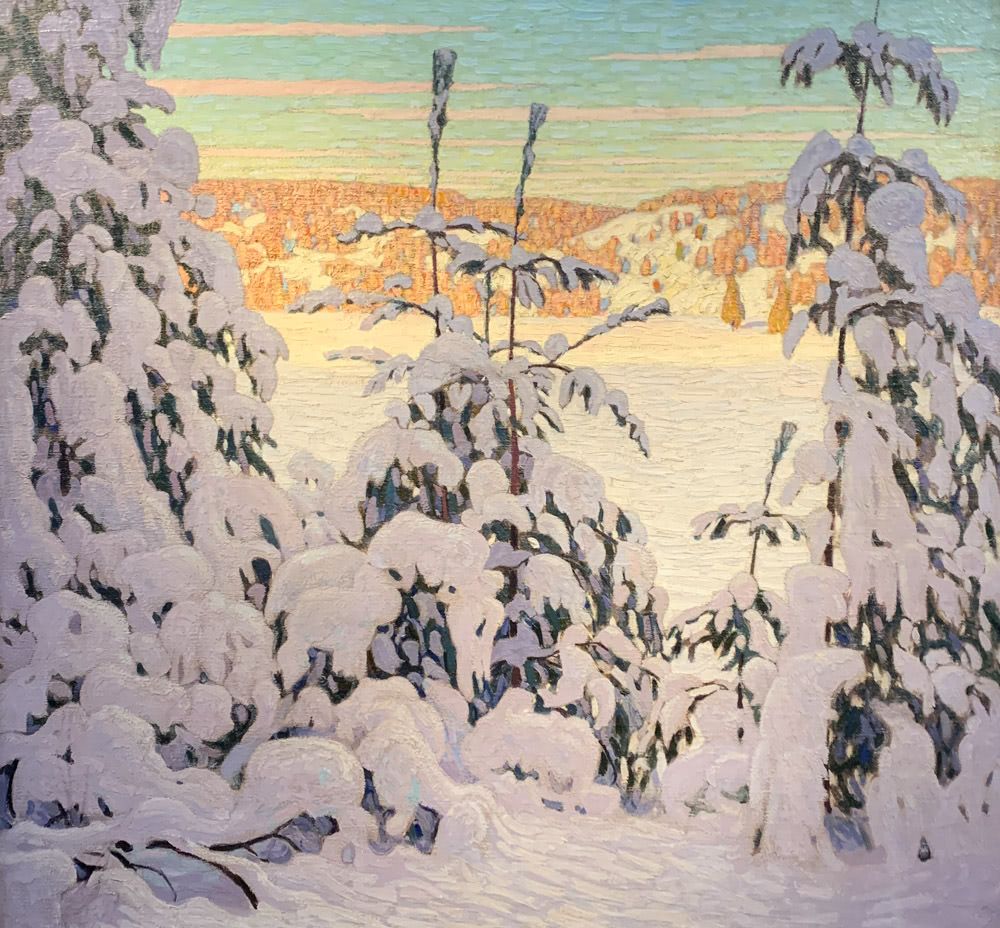 Lawren S. Harris: Snow II
Lawren S. Harris: Snow II
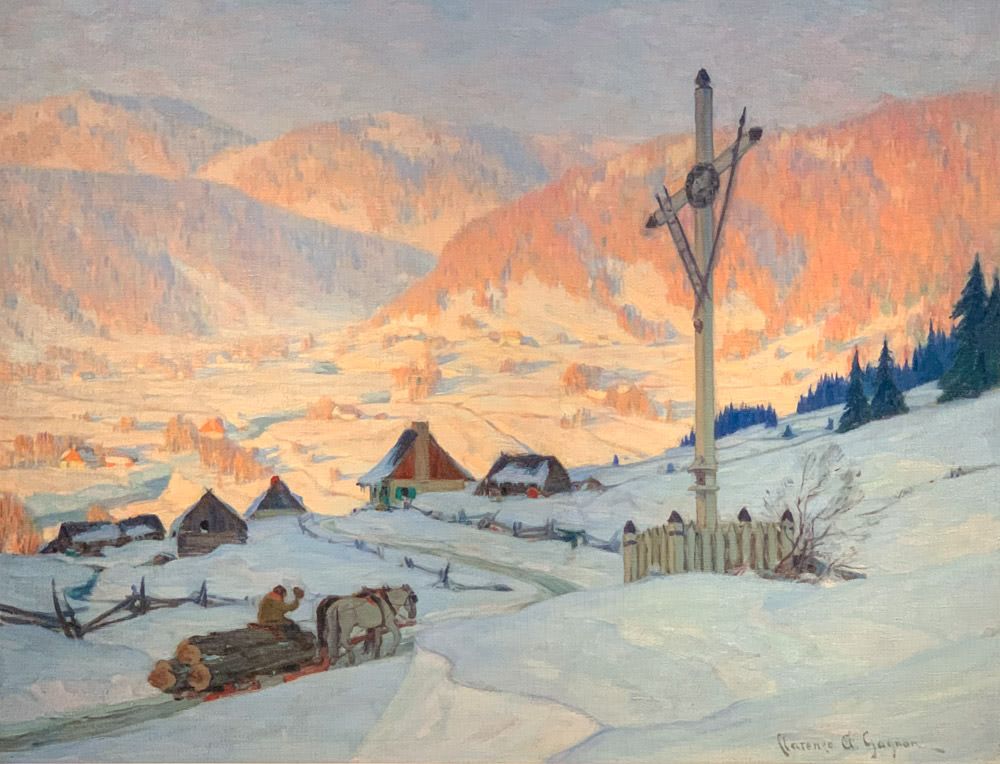 Clarence Gagnon: The Train, Winter
Clarence Gagnon: The Train, Winter
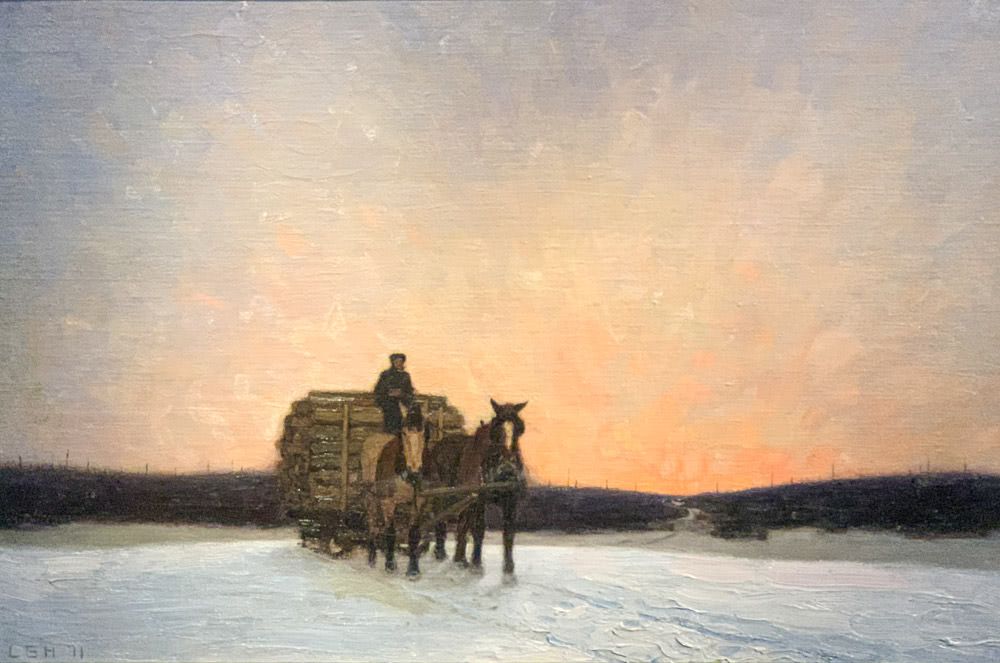 Lawren S. Harris: A Load of Fence Posts
Lawren S. Harris: A Load of Fence Posts
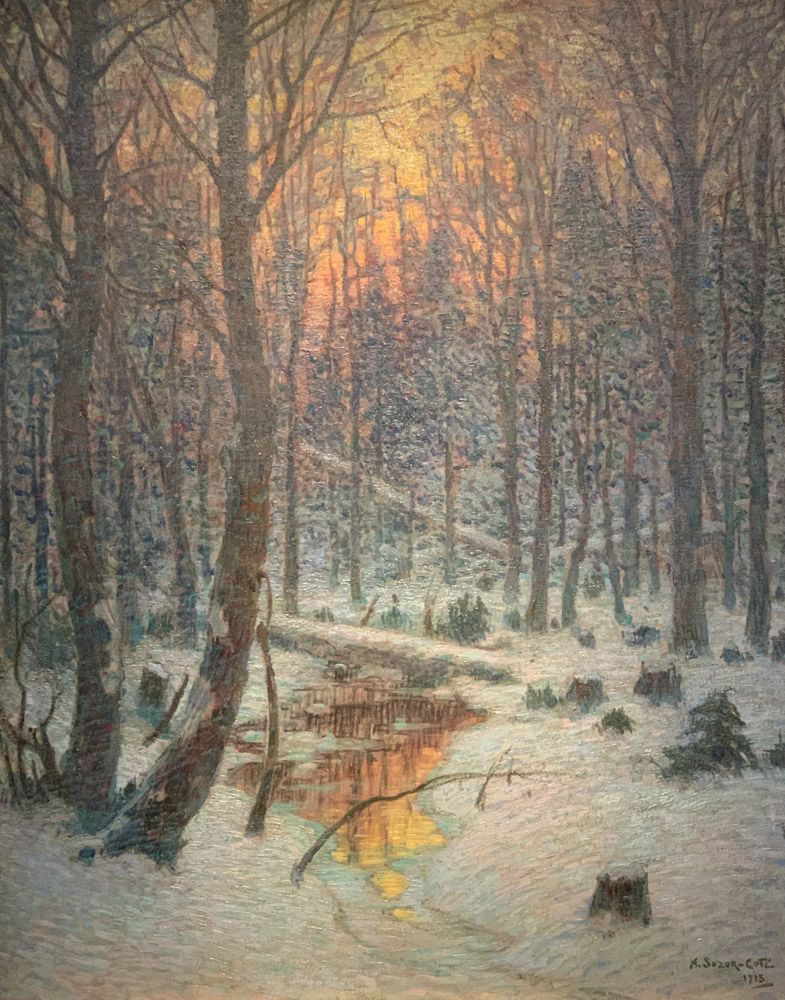 Marc-Aurèle de Foy Suzor-Coté Thaw, Arthabaska
Marc-Aurèle de Foy Suzor-Coté Thaw, Arthabaska
You also caught glimpses of a nation in the process of rapid industrialisation:
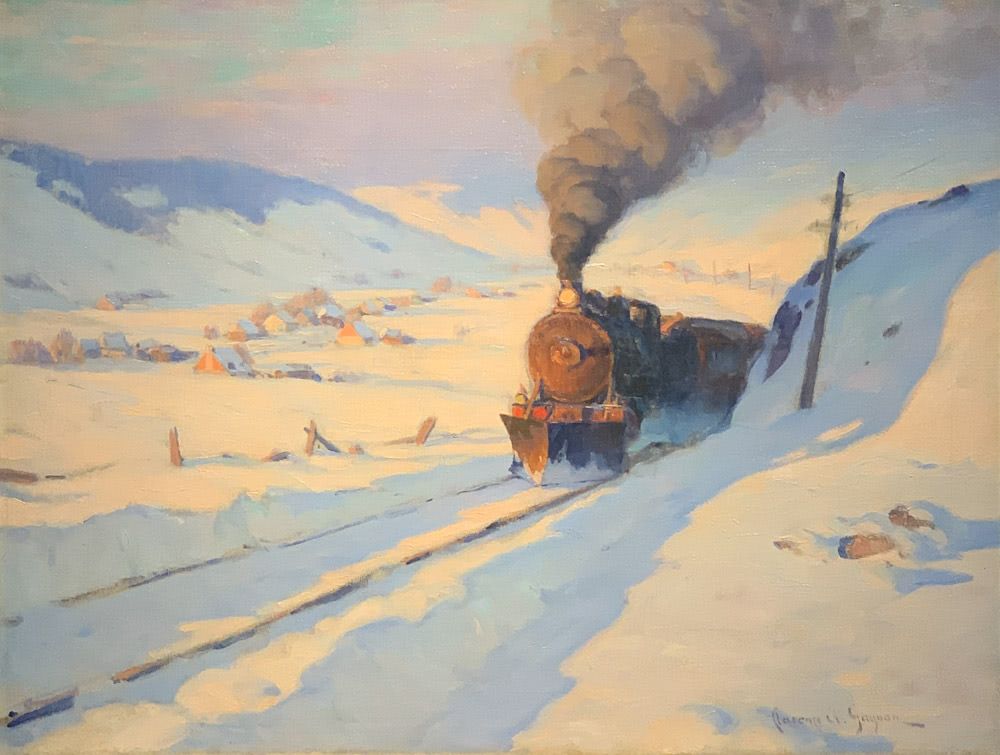 Clarence Gagnon: The Train, Winter
Clarence Gagnon: The Train, Winter
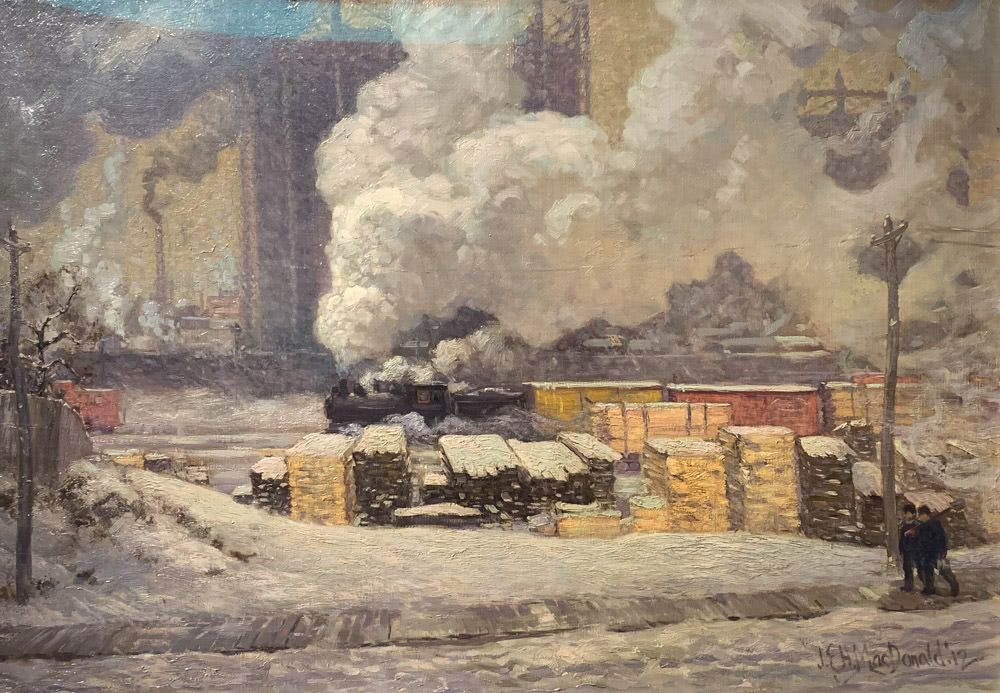 J. E. H. MacDonald: Tracks and Traffic
J. E. H. MacDonald: Tracks and Traffic
 Robert Pilot: Waiting For The Ferry
Robert Pilot: Waiting For The Ferry
Then there were scenes from daily life in cities of Canada1:
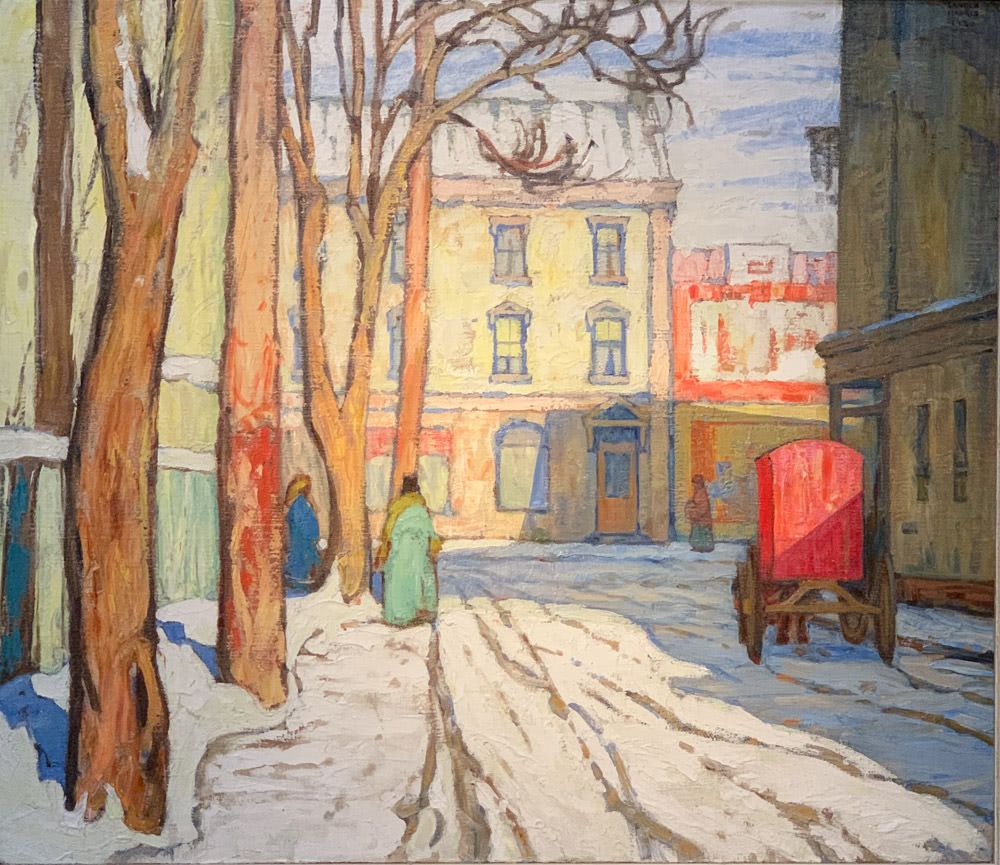 Lawren S. Harris: Toronto Street, Winter Morning
Lawren S. Harris: Toronto Street, Winter Morning
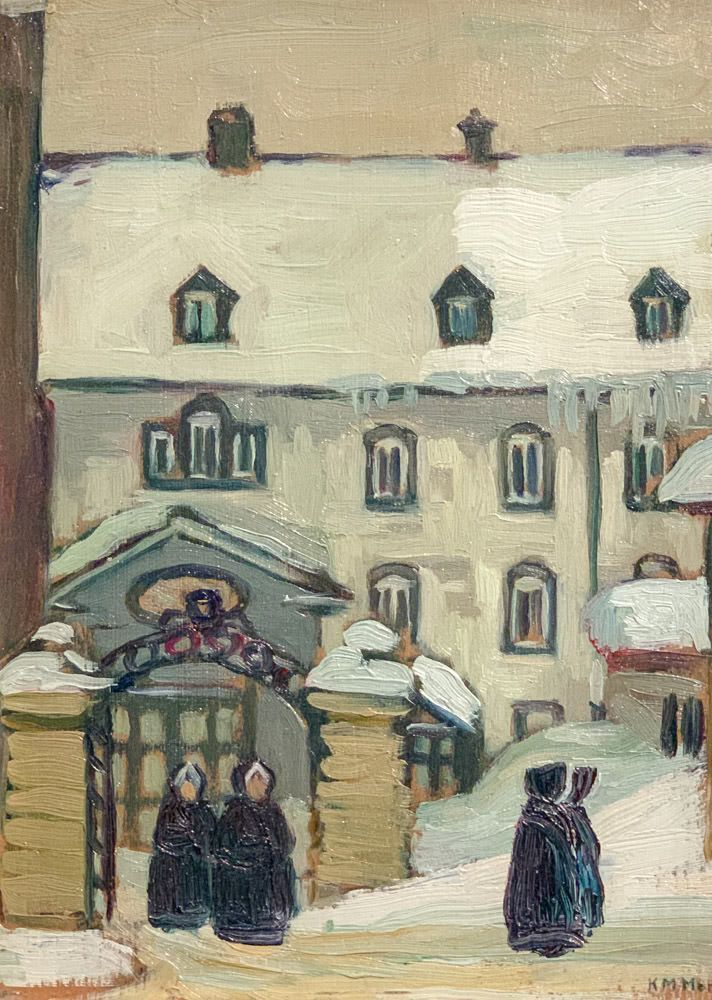 Kathleen Moir Morris: Nuns, Quebec
Kathleen Moir Morris: Nuns, Quebec
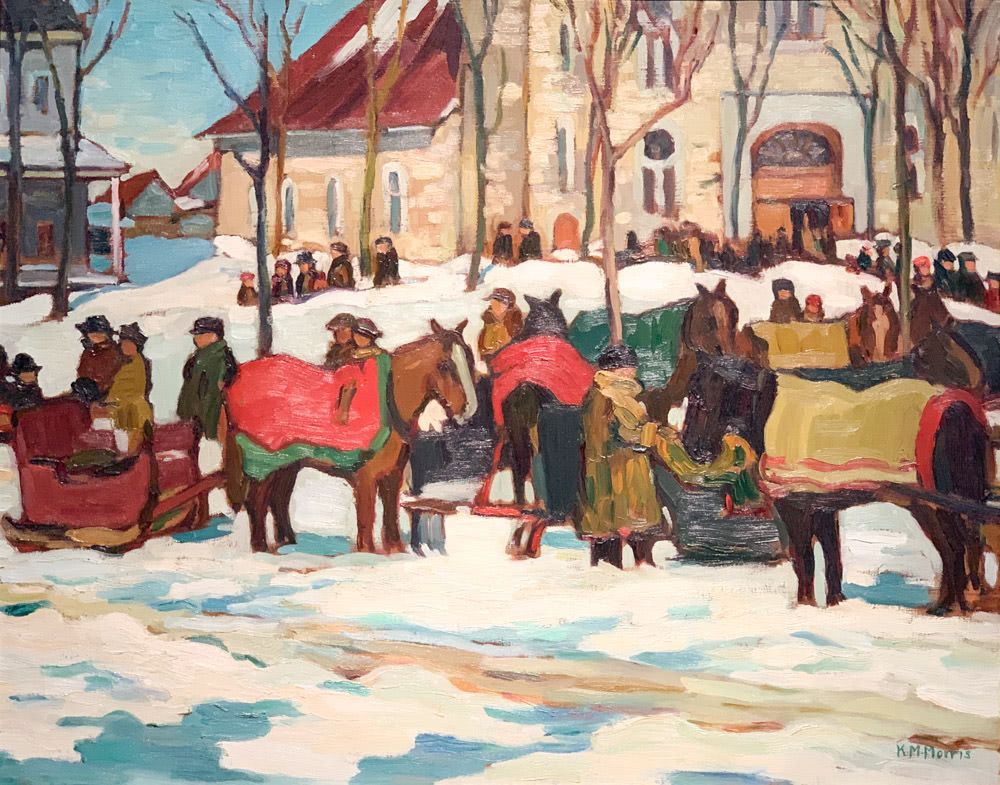 Kathleen Moir Morris: After “Grand Mass”, Berthier-en-Haut
Kathleen Moir Morris: After “Grand Mass”, Berthier-en-Haut
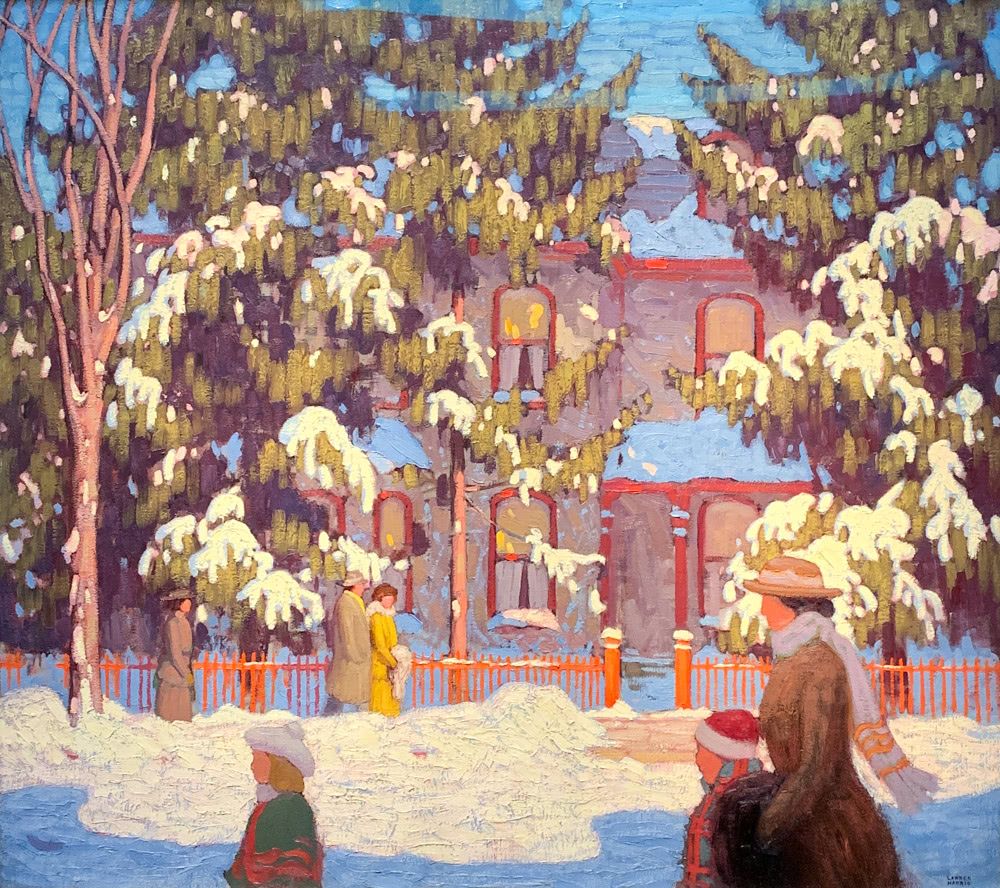 Lawren S. Harris: Winter Afternoon, City Street, Toronto, aka ‘Sunday Morning’
Lawren S. Harris: Winter Afternoon, City Street, Toronto, aka ‘Sunday Morning’
It was not all desolate winters and bleak northern light - quite a few works that depicted scenes from spring/autumn2:
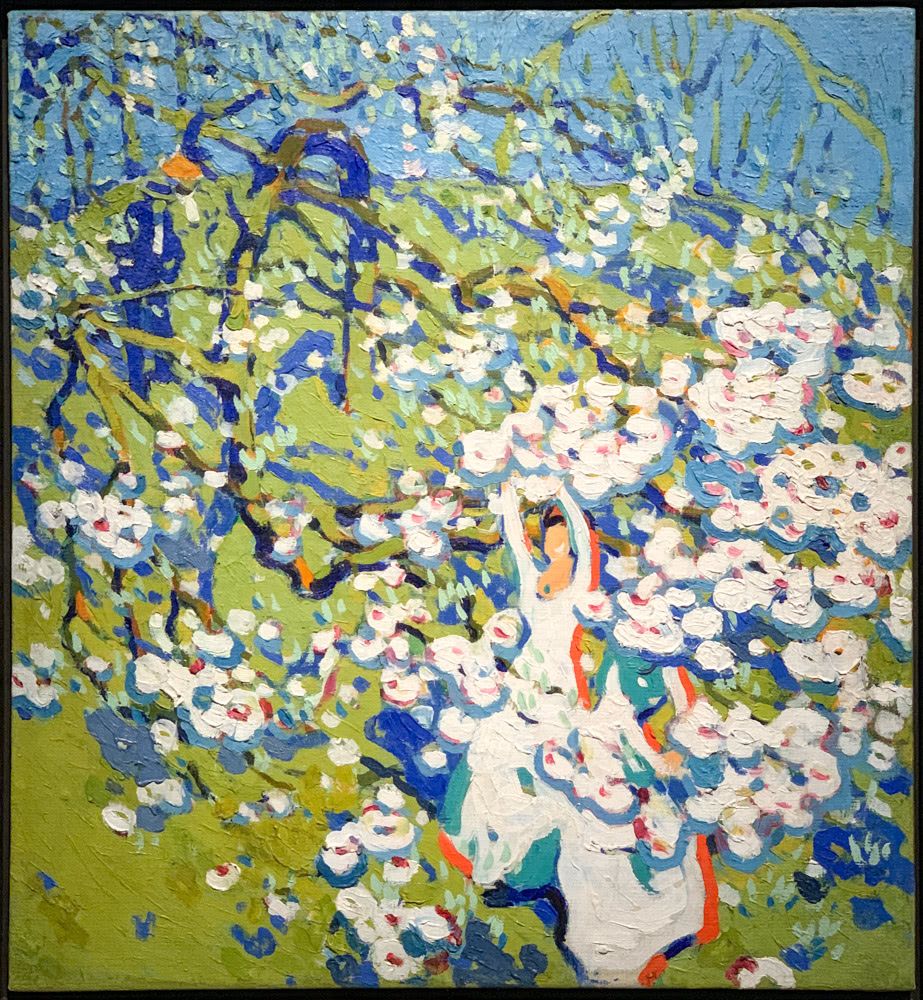 David B. Milne: The Blossom Pickers
David B. Milne: The Blossom Pickers
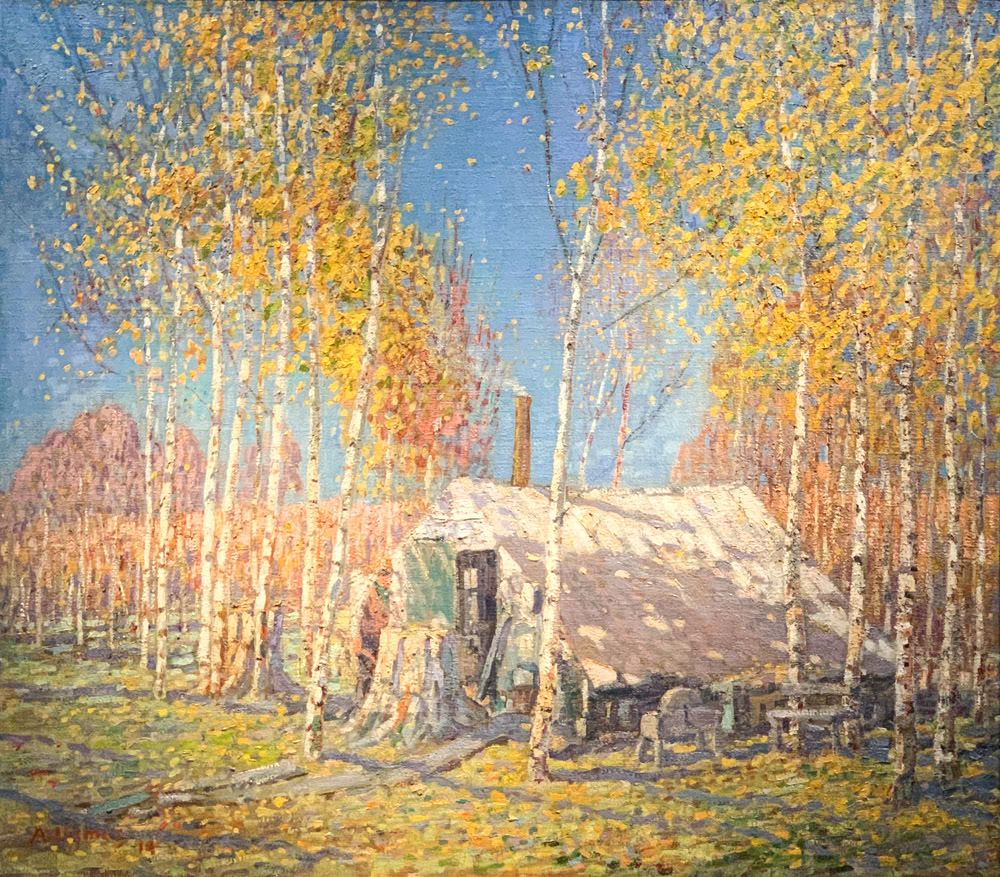 Arthur Lismer: The Guide’s Home, Algonquin
Arthur Lismer: The Guide’s Home, Algonquin
And quite a few human subjects too:
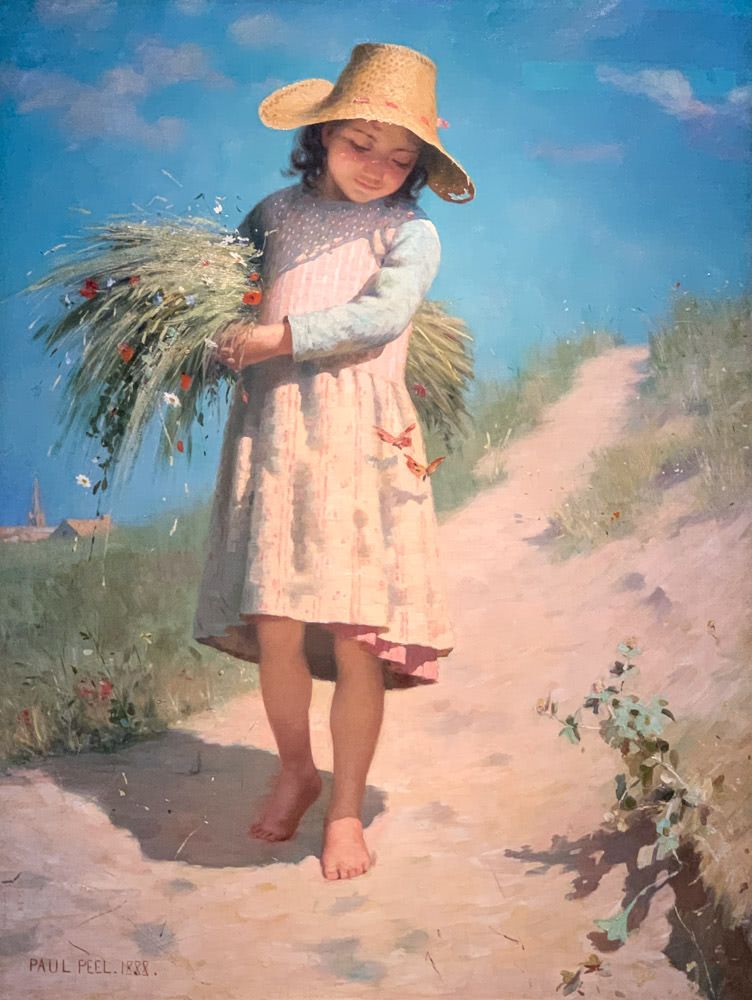 Paul Peel: The Young Gleaner, aka ‘The Butterfiles’
Paul Peel: The Young Gleaner, aka ‘The Butterfiles’
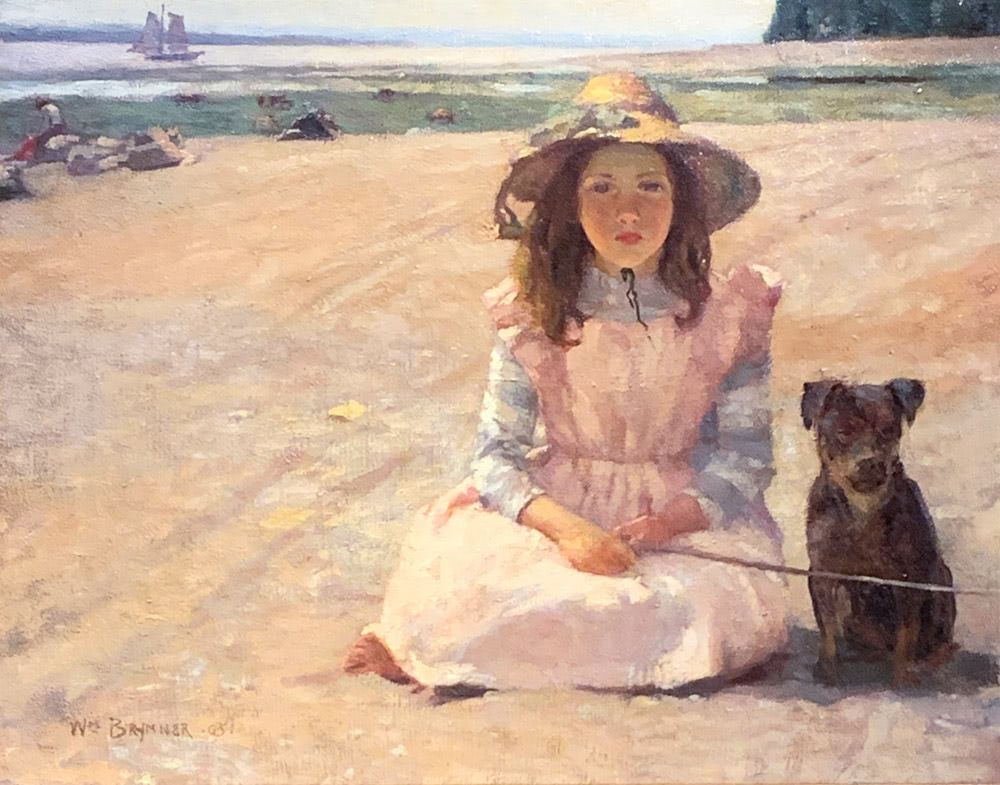 William Brymner: The Girl and The Dog
William Brymner: The Girl and The Dog
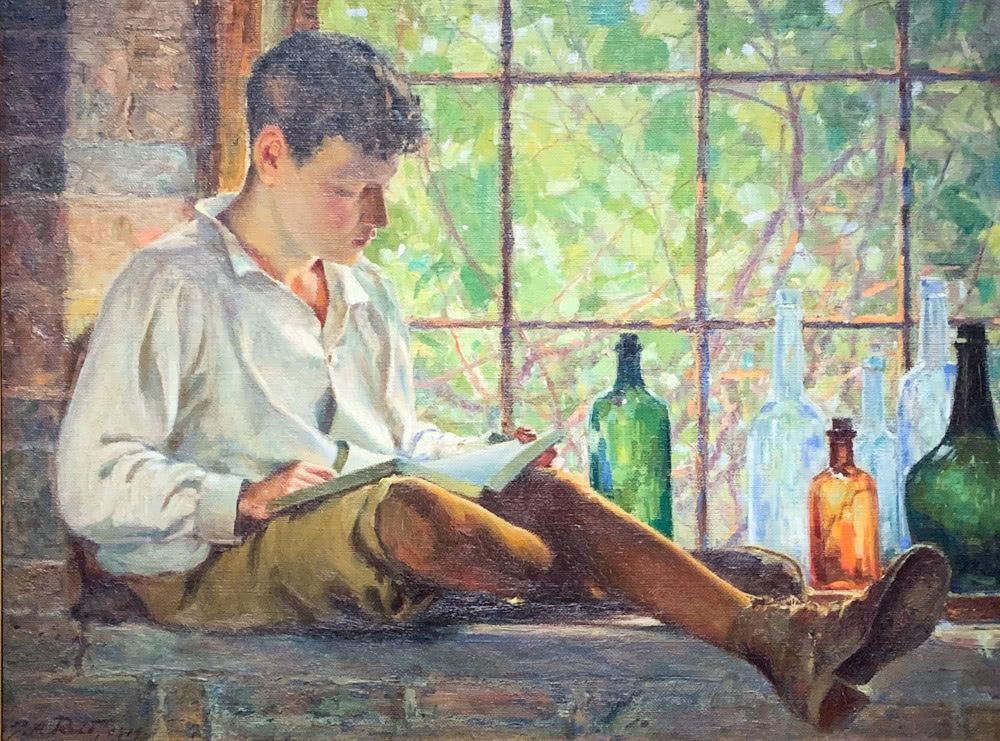 George Reid: In The Cellar Window
George Reid: In The Cellar Window
And of course, a scene that would perhaps rank as the most Canadian of them all - maple syrup being harvested:
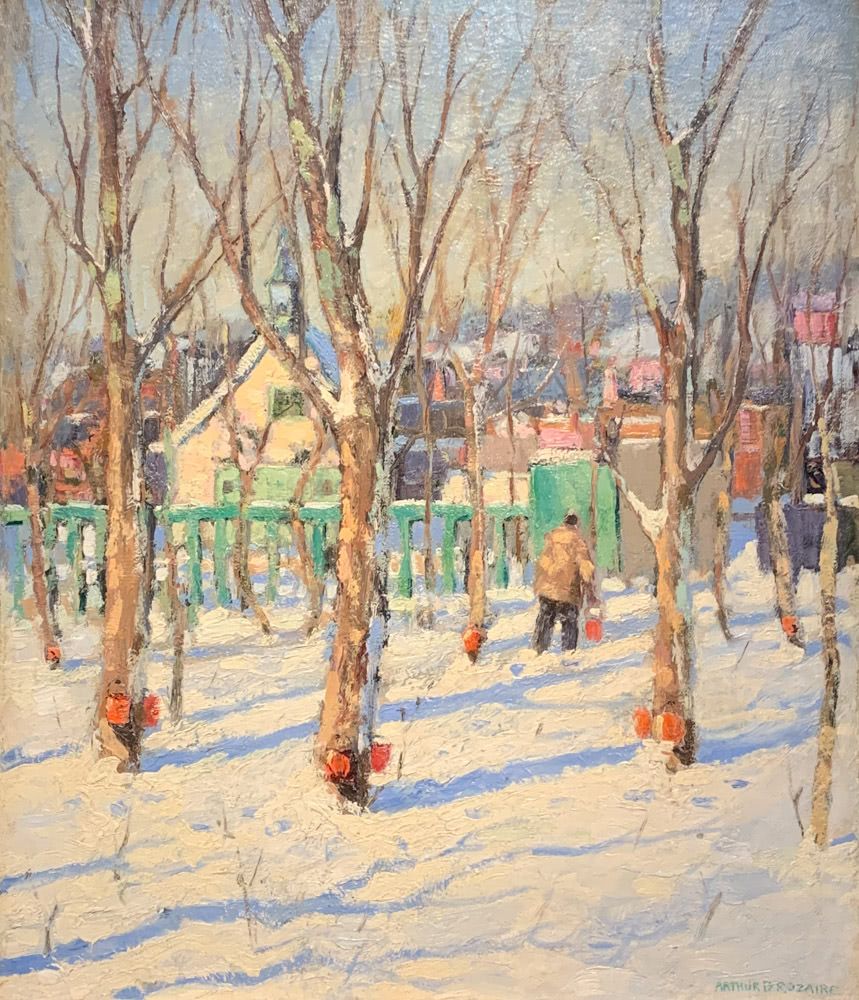 Arthur Dominique Rozaire: Winter, Sap Buckets, Quebec
Arthur Dominique Rozaire: Winter, Sap Buckets, Quebec
The sense of immediacy, life and a masterful depiction of light that seems to illuminate impressionist works from within, were all too present in the works on display here. Glad I could visit!
One of the paintings in this section had an alternate title: “Sunday Morning”. It suddenly brought back memories of No Doubt’s 90s music video for the song of the same title. Upon returning home and watching it on youtube, I realised that I had remembered nothing of the video except the food fight in the end. I am always amazed at the memories our minds selectively choose to preserve and triggers that evoke them.↩︎
There was even an entire section of scenes from beaches.↩︎